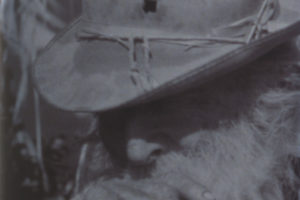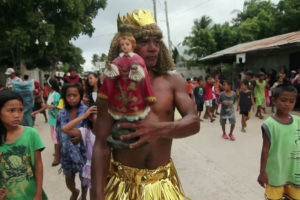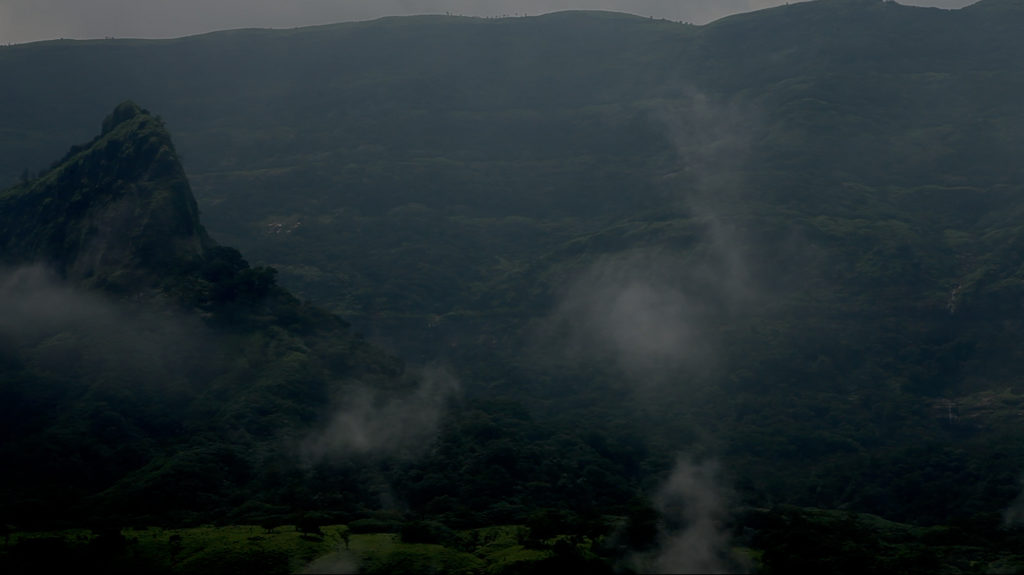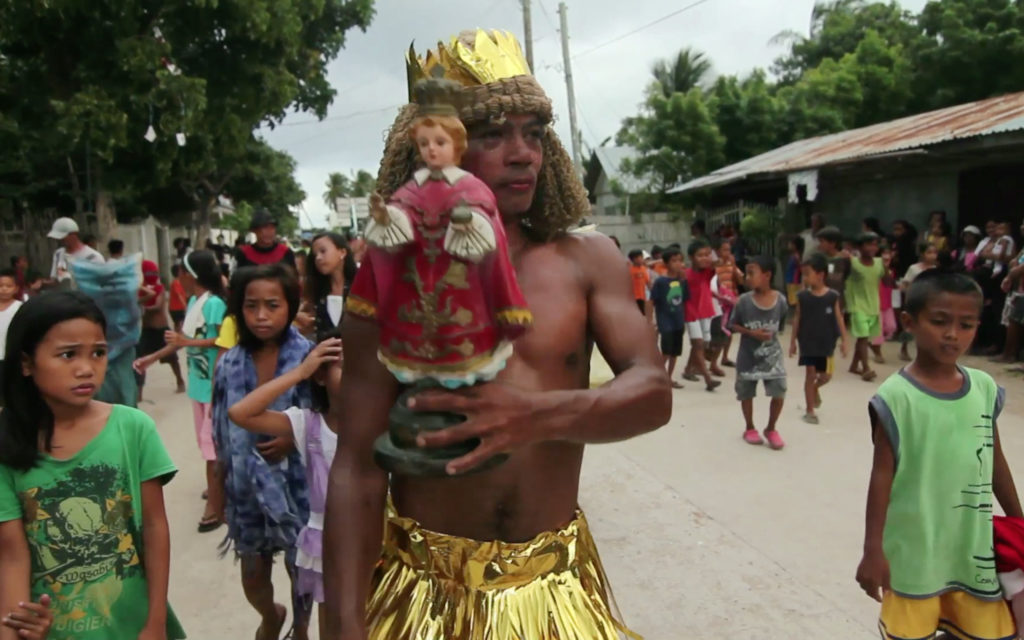Archive

THE WEST COAST / BRUCE BAILLIE #2 – 61’
08.10.2016 / 21:15
Plateau
Program 2016 » Other programmes » ABCD

Ces portraits hybrides particulièrement inventifs utilisent la mythologie et le folklore pour révéler l’attraction paradoxale entre réalité documentaire et mondes de fiction.
Deze zeer inventieve, hybride portretten gebruiken mythologie en folklore om de paradoxale aantrekkingskracht te onthullen tussen documentaire realiteit en fictieve werelden.
These highly inventive hybrid portraits use mythology and folklore to reveal the paradoxical pull between documentary reality and fictional worlds.
TAD ERMITANO, PHILIPPINES 1994
colour, 10’, 16 mm transferred to digital, v : FILIPINO, sub : —
Cette parodie irrévérencieuse de science-fiction est moins un documentaire qu’une pure merveille. Une méditation drôle sur l’écoulement du temps, la politique et les points de vue en cinéma. Espérant envoyer un message dans le passé en équipant sa caméra pour filmer à travers l’image du poète José Rizal imprimée sur les billets philippins, Ermitano joue avec les limites de différents points de vue : celui de Rizal, celui de la politique philippine, celui de la caméra, le sien, et le nôtre.
Een oneerbiedige parodie op sciencefictionfilms die niet zozeer een documentaire is maar wel een pareltje van een film. Of nog: een humoristische meditatie op tijd, politiek, en point-of-view in film. Ermitano hoopt een bericht terug te sturen in de tijd door de camera zo uit te rusten dat hij doorheen het portret van de dichter Rizal (gedrukt op Filippijnse geldbiljetten) filmt. Zo speelt hij met de grenzen van de verschillende perspectieven: dat van Rizal, de Filippijnse politiek, de camera, de filmmaker – en het onze.
This irreverent parody of science-fiction films is less a documentary than a marvel. A humorous meditation on time, politics, and point of view in cinema. Hoping to send a message back in time by equipping the camera to shoot through Rizal’s portrait on Philippine money, Ermitano plays with the boundaries of different points of view : Rizal’s, that of Philippine politics, the camera’s, the filmmaker’s, and ours.
YOSEP ANGGI NOEN, INDONESIA 2013
b&w, 12’, Digital File, v : NO DIALOGUE
Le film consiste en quatre fragments visuels. Chaque fragment comporte des images factuelles d’une situation géographique donnée, de paysages déconstruits filmés en plans longs.
Deze film bestaat uit vier beeldfragmenten. Elk fragment bevat documentaire beelden van een geografische situatie met lange shots van gedeconstrueerde landschappen.
This film consists of four visual fragments. Each fragment contains factual visuals of a geographic situation with long-takes of deconstructed landscapes.
WREGAS BHANUTEJA, INDONESIA 2014
colour, 10’, Digital File, v : INDONESIAN, sub : ENG
Situé au milieu des retombées de poussière issue de l’éruption du mont Kelud à l’Est de Java, le film mène son exploration en recourant à la mythologie du folklore de Lembusura.
Deze film is gesitueerd in de stoffige regen van de uitbarsting van de Mount Kelud in Oost-Java en onderzoekt die uitbarsting via de mythologie van de Lembusara folklore.
This film is situated amidst the dusty rain of the Mount Kelud eruption in East Java and is explored through the mythology of the Lembusura folklore.
MARTHA ATIENZA, PHILIPPINES 2012
colour, 8’, Digital File, v : NO DIALOGUE
La christianisation d’une fête animiste, son intégration dans un certain catholicisme populaire et sa lente transformation en folie moderne. Le portrait tragi-comique d’une petite ville insulaire dont les moyens de subsistance sont profondément liés à la mer.
Een animistisch festival dat gekerstend is en werd opgenomen in de katholieke folklore verandert langzaamaan in moderne waanzin. Een tragikomisch portret van een klein eilandstadje dat voor zijn levensonderhoud erg afhankelijk is van de zee.
An animistic festival, Christianized and incorporated into Folk Catholicism, slowly turns into modern day madness. A tragicomic portrait of a small island town whose livelihood is deeply rooted in and bound to the sea.
PAYAL KAPADIA, INDIA 2015
colour, 19’, Digital File, v : HINDI, sub : ENG
Deux techniciens des services forestiers marchent dans la forêt, installant des caméras thermiques pour filmer l’activité nocturne des animaux. La forêt se trouve à la frontière entre le Tamil Nadu et le Kerala, les deux États dont sont originaires les deux hommes. Ailleurs, il y a longtemps, une femme a quitté sa forêt, qu’elle aspire aujourd’hui à retrouver, ainsi que son défunt mari. Ses désirs se manifestent dans ses rêves qui sont déclenchés par la dernière mangue de la saison.
Twee technici die voor het departement bosbouw werken, lopen door een bos. Ze plaatsen warmtegevoelige camera’s om ‘s nachts dierlijke activiteiten te documenteren. De mannen komen uit twee verschillende staten, Tamil Nadu en Kerala, en het bos ligt op de grens van die twee staten. Elders is een vrouw, lang geleden, weg van een bos gaan wonen. Ze verlangt naar haar overleden man en ook naar het bos, wat tot uiting komt in haar dromen, die uitgelokt worden door de laatste mango van het seizoen.
Two technicians from the forest department walk through a forest, setting up heat sensitive cameras to document animal activities in the night. The men are from two different states, Tamil Nadu and Kerala, as the forest lies on the border of the two states. Somewhere else, a woman has moved away from a forest a long time ago. She yearns for her dead husband and also the forest. Her desires are manifested in her dreams that are triggered by the last mango of the season.
Présenté par / Ingeleid door/ Introduced by Shai Heredia



